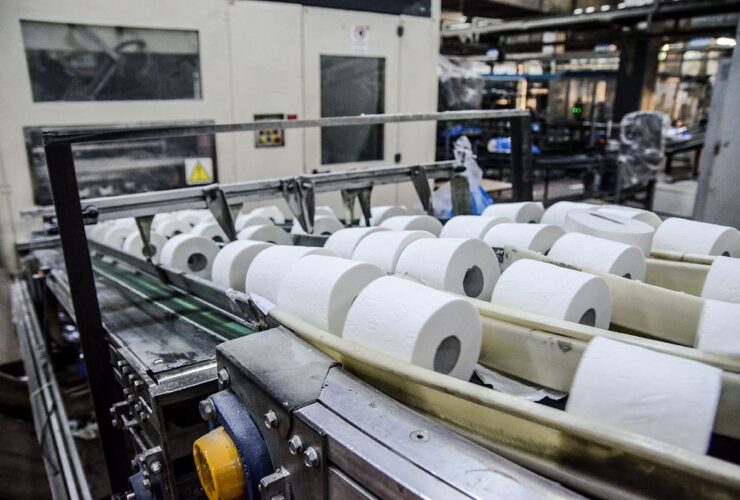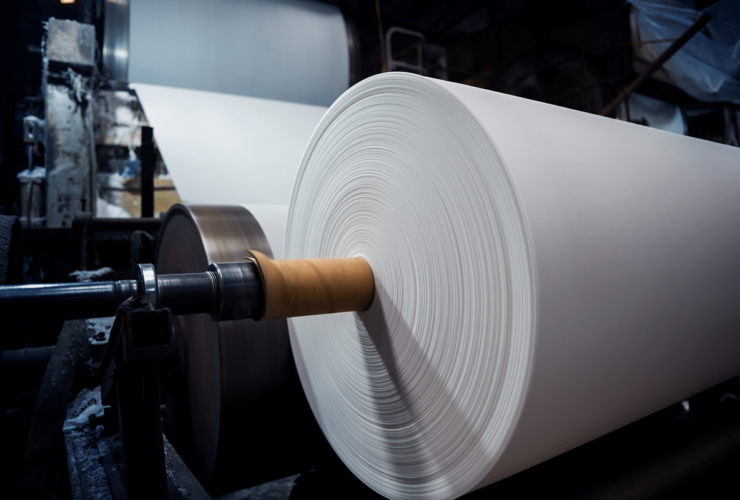This post is intended to help readers understand the mechanics and importance of How to Calculate an ROI. I suspect most that might read this post are engineers by training and never had the first class back in college on this topic. Sure, we had Heat and Mass Transfer, Calculus, Chemistry, and Thermodynamics along with Macro and Microeconomics, but little about Project Management or how calculating a project’s return might be.
Typically, those skill sets are learned on the job by a mentor willing to share their knowledge. Further, try to think of yourself as a facility manager. Why? Once you understand that most P&P facilities in North America are 40 to 50 years old, you will quickly understand this: Every department needs significant capital to stabilize its operations. That original tank and pump that has been in service for 40 years is at its end of life and must be replaced. That is what is called a Sustaining project.
Additionally, new or more stringent Environmental, Health, and Safety (EH&S) requirements must be complied with. The critical point is that roughly 80% of all CapEx expenditures go to Sustaining or EH&S projects, a few of which have a return. That leaves just 20% of the remaining CapEx funds that can be devoted to projects with a return. So, projects need to be chosen wisely, with returns, where the risk of technology and competing priorities need to be sorted out.
ROI and IRR What do they mean?
Return on Investment (ROI) is a general concept that provides a calculated return on investment.
ROI = Net Income from the Investment / Cost of the Investment
Or ROI can be viewed as:
ROI = Total EBITDA from the Investment / Total Installed Cost
While a good indicator of investment performance, it is too broad to deal with ranking projects to determine which should be carried out. To do this, one method is to use the Internal Rate of Return (IRR) which is defined more precisely than ROI, which, as indicated above, can have many definitions. (I’m not going to get into the specifics here. Instead, if you’re interested in knowing more, I refer you to Investopedia.com, which gets into the details as deeply as you wish to go).
In everyday life of a project manager, these terms might be used interchangeably. Still, engineers and project managers mean IRR when discussing the project’s return on investment.
How To Calculate IRR For Your Mill Investment
All companies, not just P&P firms, have developed financial models that are considered confidential and are rightfully not shared with anyone outside their firm. These economic models are typically produced within a Microsoft Excel spreadsheet where factors such as defining the key Net Income from the investment (i.e., EBITDA drivers, where typically there are only one or two key drivers) are meticulously detailed out along with how many years they are allowed to provide economic benefits. [EBITDA is an abbreviation for Earnings Before Interest, Taxes, Depreciation, and Amortization.] Then developing the Cost of the Investment (Total Installed Costs) is needed, which is more familiar to engineers than these financial terms. Both technical and financial skillsets are necessary to become a trusted adviser to the mill.
A Couple of Caveats to Note
- With roughly 80% of the P&P projects having little to no returns (Sustaining and EH&S), there is a strong tendency to cut needed parts of the scope of Sustaining and EH&S projects to get the project approved. Resist this challenge, as this can become painful to add scope after the project is approved.
- Most companies allow a maximum of 10% over what was approved by management. If you go over that 10%, let’s say it is a distressing experience. You get raked over the coals for allowing scope creep, not anticipating surges in stainless steel pricing, lengthy delays due to transport challenges from some overseas shipments, and so forth.
All project engineers face these issues sometime in their career, be mindful of these challenges when pulling the Total Installed Costs together and add appropriate contingencies for items that can meaningfully impact total costs and start-up timing.
The Finance Department May Want To See ROI or IRR
There are times when the Finance Department might want to see a return on investment in terms they are more familiar with. In this case, a conversion formula that approximates reducing the IRR by taxes, interest, depreciation, and amortization is:
ROI = IRR *.72
IRR = (Total Annual EBITDA)/ (Total Installed Costs)
Using a 0.72 multiplier removes taxes, interest, depreciation, and amortization in an investment to determine how it would impact the company’s bottom line: Net Income.
Additionally, there are a lot of other details that all financial models consider. Below we will touch on adjustments that accounting or financial personnel assigned to the project need to know to adjust the basic formula to fine-tune the financials properly. These adjustments provide a more accurate portrayal of your investment.
Frankly, the table below does not do this justice. Suffice it to say that the little financial calculator of ROI = (Total Annualized EBITDA * 0.72) / (Total Installed Costs) is to be used only in the early stages of a project.
Many variables need to be considered within each firm’s financial calculator, but for purposes of this article, consider this as part of an early stage/feasibility study stage within the project’s life.
Again, refer to Investopedia.com for further detail.
| Variables | How is it measured | Comments / Examples |
| Start & Completion Dates | Measured in Months | Like a bank note, how long will you borrow the money? |
| Costs of borrowing money. | % Interest Rate Charged | We know that the Fed has raised interest rates and continues to do so to combat inflation. But, unfortunately, it has increased considerably in the last two years. |
| What are the key drivers that will deliver income back to the company? And for how long? | These should be defined on an annualized basis along with the assumptions. EX: Reduce culls off PM5 by 400 tons/yr @ $250/ton = $100K/yr. | In this case, the Annual EBITDA would be $100K/yr. We also need to define how long this benefit will continue. In this case, the assumption is 36 months of benefits. |
| Net Present Value (NPV) | Net Present Value (NPV) estimates the profitability of a project. It is the difference between the present value of cash inflows and the current value of cash outflows over the project’s period. If the difference is positive, the project is profitable; otherwise, it is not. It is used to analyze the profitability of a project. | NPV = [Cash Flow / (1+i)n ] – Initial Investment
Where i is the discount rate, assume 10%, and n represents the number of years. |
| Payback Period | The payback period is calculated by dividing the initial investment by the annual cash flow. | EX: if we have a $400K initial investment and an annual cash flow of $100K/yr, it will take four years to recover the investment. |
This article is an excerpt from a TAPPICon presentation made by this writer in Charlotte, NC, in the Spring of 2022 called ABCs of Project Management; it walks the reader through the fundamentals of project management and understands how to calculate the back-of-the-envelope economics outlined here. This draws on my experience running numerous projects from the early stages through start-up. It also offers tips on defining the problem and applying good troubleshooting techniques, where you can sleuth out resources within your company, outside suppliers, that of TAPPI members, where most have a giving spirit to help a fellow P&P employee with valuable tips and tricks to resolve issues. And many times, those are non-capital recommendations.
If interested, you can download the ABCs of Project Management PowerPoint and an Excel Spreadsheet here that provides a quick and easy-to-use spreadsheet to develop a Spending Curve.





